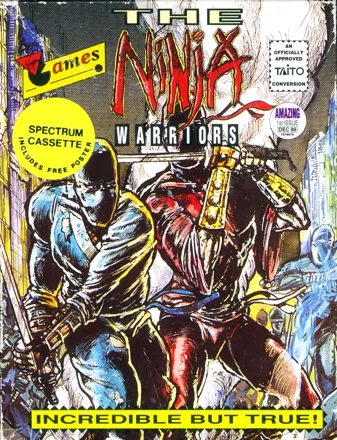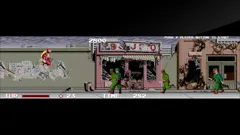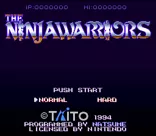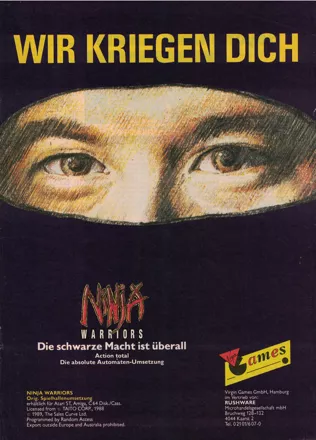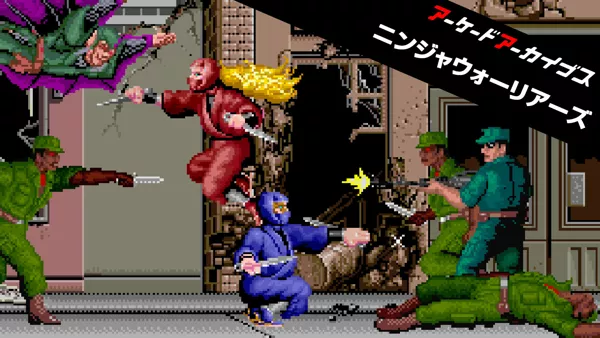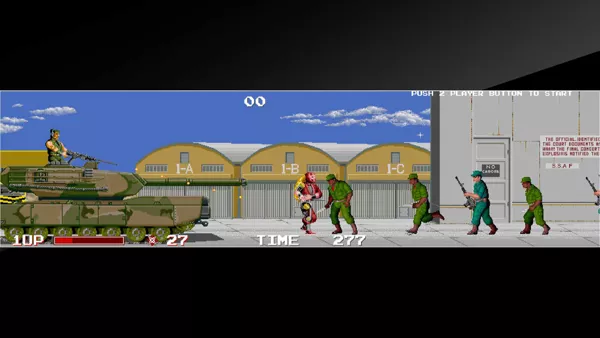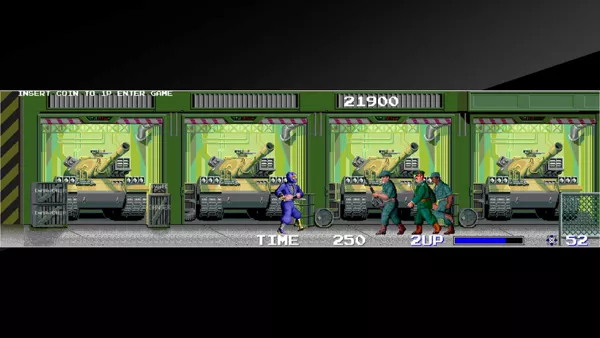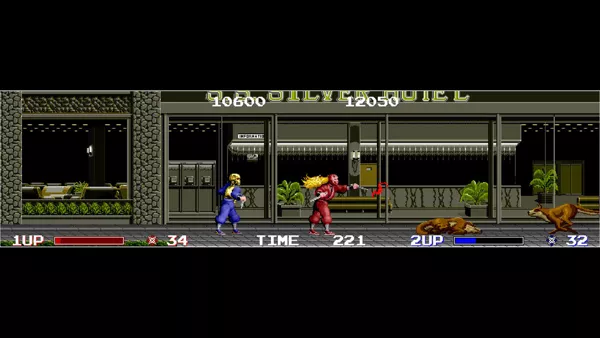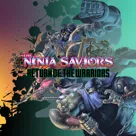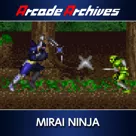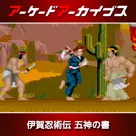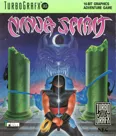The Ninja Warriors
Description official descriptions
The Ninja Warriors is a one or two player side-scrolling beat-em-up. The Taito coin-op featured three monitor screens side by side, while the Amiga version was developed in letterbox format in order to show as much of the wide screen background graphics as possible.
The player(s) control robot Ninjas, which battle their way through the levels using Shuriken and knives. As the Ninja's take damage their classic Ninja garb is torn away to reveal robotic limbs, torso or head. When the damage reaches a critical level the Ninja Robot explodes scattering mechanical body parts.
As with The Sales Curve's later title SWIV, The Ninja Warriors uses the company's Dynamic Loading System to load sprites, sound and background graphics from disk on the fly.
Spellings
- アーケードアーカイブス ニンジャウォーリアーズ - Japanese PS4 / Switch spelling
- ニンジャウォーリアーズ - Japanese spelling
Groups +
Screenshots
Promos
Credits (Arcade version)
30 People · View all
| Produced by | |
| Directed by | |
| Written by |
|
| Executive Producer | |
| Director of Software | |
| Programmers | |
| Production Designer | |
| Character Designer | |
| Assistant Character Design |
|
| Supervising Editor | |
| [ full credits ] | |
Reviews
Critics
Average score: 68% (based on 35 ratings)
Players
Average score: 3.7 out of 5 (based on 29 ratings with 1 reviews)
The Good
As an arcade conversion, this is as good as it gets. How the hell do you squeeze a game playing on three screens onto the small Amiga screen? Random Access (best known for the ground-breaking Silkworm conversion) came to the same conclusion as Taito et al when they did their console versions, but took the consequences to the edge; they reduced the playfield to a narrow strip, thereby mimicing the long screen on the arcade original, albeit with reduced resolution.
But what they also did, was to render the graphics as close to the arcade original as they could. This was when 512 kB was still the standard configuration, but the graphics are really well-drawn. Slightly Amiga-ish, but not far away from the coin-op. And the music!
After having heard the Atari and Speccy renditions of the fabulous, inventive, legendary arcade soundtracks, I was expecting what was to be expected – a conversion of the Atari ST tune, only with stringy, bleepy synth sounds. I was amazed when what came out of the speakers was the original Zuntata sound track; rendered as close to the original as humanly possible on the four channel Paula chip. Remember that this was at least a year before the Amiga at last got rid of the curse of bad Atari ST conversions and in an environment lacking in memory ?– it was a bold move to give the musician so much memory and freedom to revive the spectacular sound track. He did it. You can't believe it's an Amiga if you close your eyes.
The Bad
The basic premise is limited. The arcade original is a rather slow side-scroller about a robot ninja slaughtering soldiers. With three screens, a big sound amplifier and lots and lots of memory, it made a name for itself, but in the end, it was just Taito's over-done (and simplistic) answer to Sega's Shinobi. When you remove the three screens screens, the huge loudspeakers and the sit-down cabinet, all that remains is a fairly unoriginal slash'em'up. And the thin, wide screen is not as impressive as three, big screens.
The Bottom Line
Everything bad about this game is Taito's fault. Everything good is to Random Access's credit. The Amiga was never known for good arcade conversions, but this is one of the few good ones. If you like the original game, but can't afford an entire coin-op cabinet, you can't go much wrong with the Amiga conversion. Brilliant.
Amiga · by Игги Друге (46636) · 2007
Trivia
Disk streaming on Atari ST/Amiga
The background of the arcade original didn't features tiled blocks, but large drawn graphics, which is a huge technical problem converting to the home computers because of the limited memory. The programmers from Sales Curve solved this on the Atari ST and Amiga by streaming the data from floppy disk during play. That means graphics are loaded while the player plays the game. This worked, as both computers are featuring DMA floppy access, that means the floppy controller can write to memory without slowing the main processor. Using this feature was widely adopted in the demo scene, but very rarely in game productions.
German index
On September 28, 1991, The Ninja Warriors was put on the infamous German index by the BPjS. For more information about what this means and to see a list of games sharing the same fate, take a look here: BPjS/BPjM indexed games.
Unusual cheat modes
In addition to the usual "infinite lives" cheat modes the game featured a number of strange modes implemented by the programmers during testing while they were waiting for new bug lists. A few of these modes included: * Snow white - the Ninja Warriors were displayed minus their torso so that they became dwarves. * Exterminate - the screen changed to a "negative" effect palette similar to the cheapo fx used in Doctor Who when the Daleks were killing people. * Casablanca - black and white display * One small step - moon gravity made all jumps 5 times larger and falling much slower. * Kylie - the music is played out of tune * Upside down - the screen is displayed upside down
In total there were 16 of these different cheat modes.
Awards
- ST Format
- January 1990 (issue #06) - Included in the list 50 Games of the Year
Information also contributed by Xoleras
Analytics
Related Sites +
-
Gameplay overview and version comparison
Describes the main gameplay features and plot of this game and its sequel. The site also includes a few screenshots from the different ports of the game. -
Lost In Translation - Arcade and port comparison
Compares the arcade and various ports graphics and music. Also contains pictures of the original arcade cabinet and arcade flyers.
Identifiers +
Contribute
Are you familiar with this game? Help document and preserve this entry in video game history! If your contribution is approved, you will earn points and be credited as a contributor.
Contributors to this Entry
Game added by Dan Marchant.
PlayStation 4 added by mars_rulez. Nintendo Switch added by Rik Hideto. Arcade added by FatherJack. Amstrad CPC added by Kabushi. Atari ST, ZX Spectrum, TurboGrafx-16, Commodore 64 added by Martin Smith. Wii added by gamewarrior. SEGA CD added by Katakis | カタキス.
Additional contributors: Hitman23, formercontrib, Rik Hideto, Jo ST.
Game added November 2, 2002. Last modified March 3, 2025.


